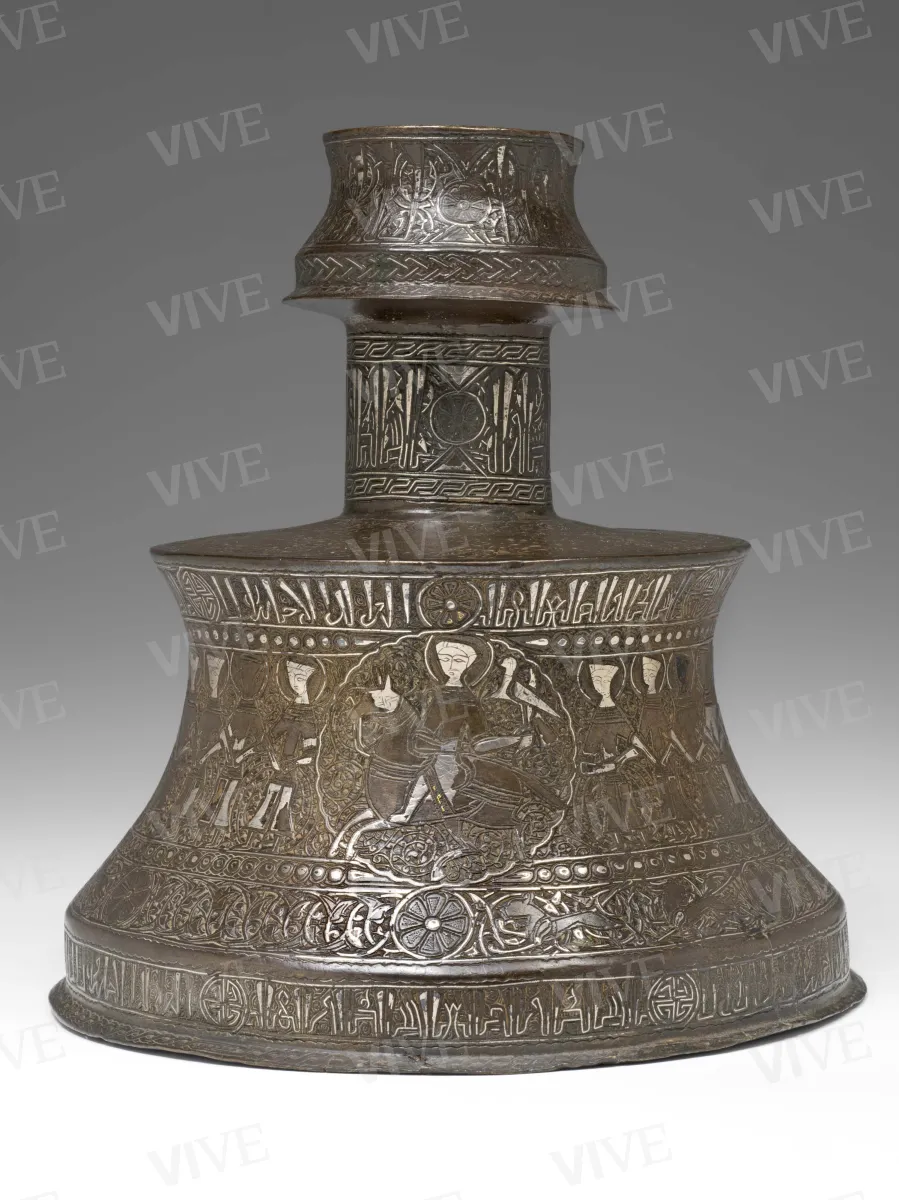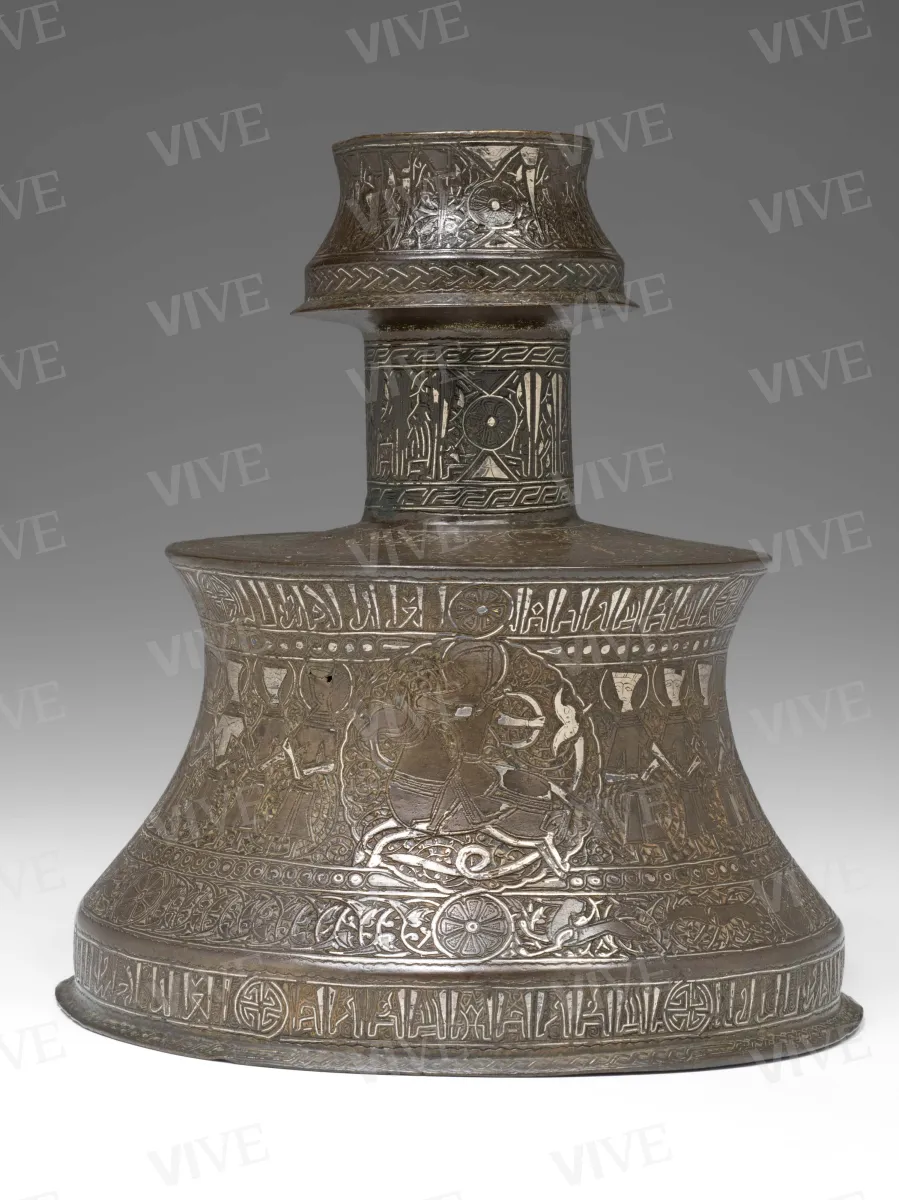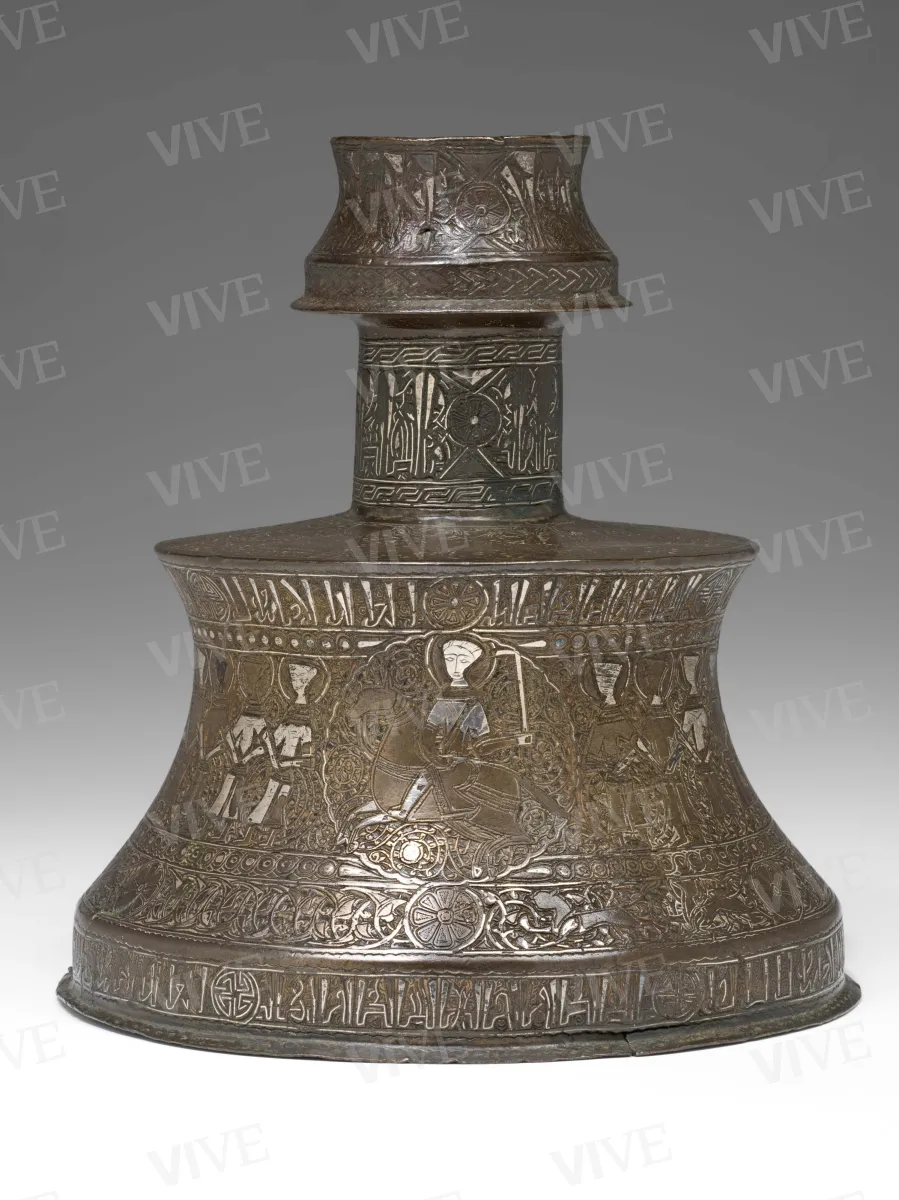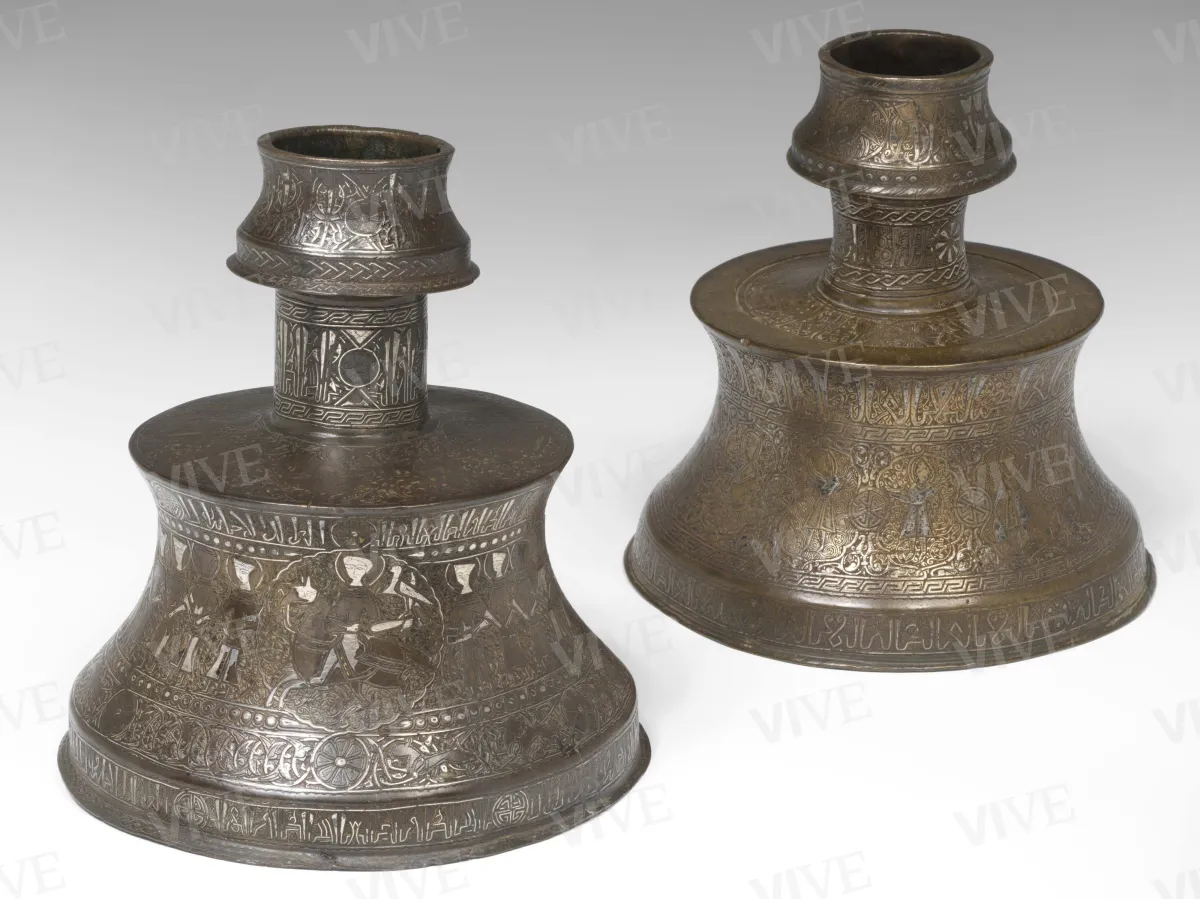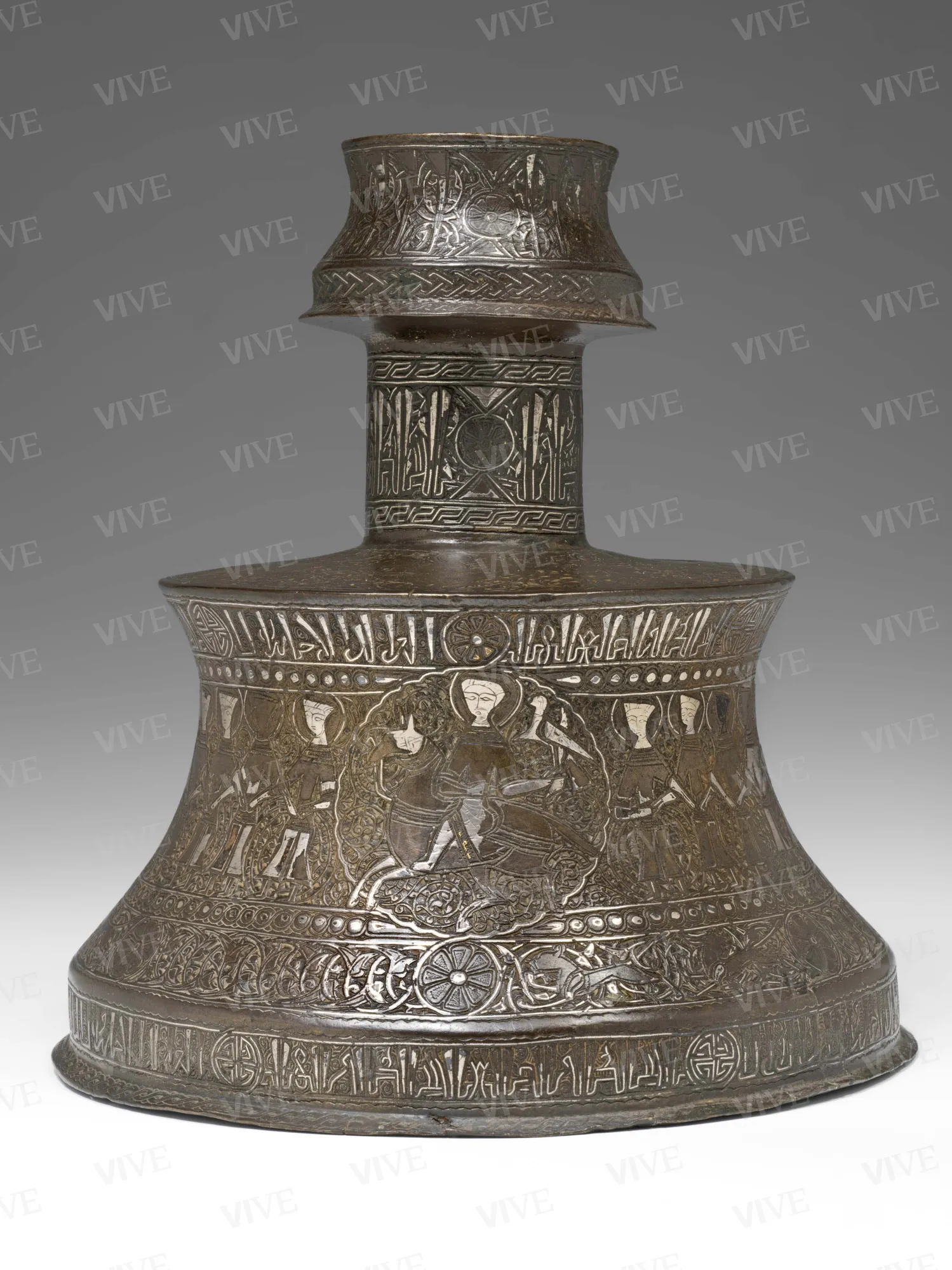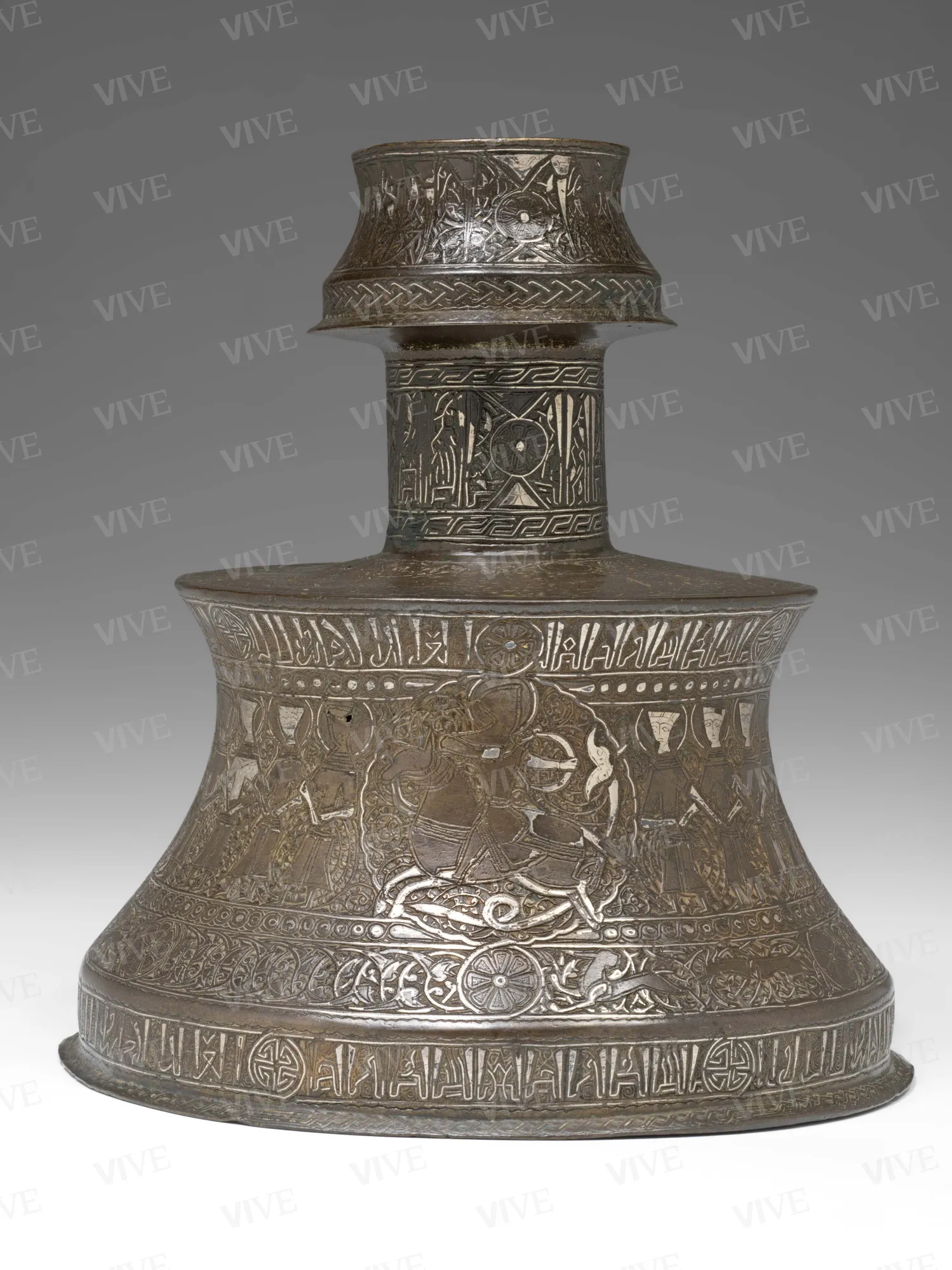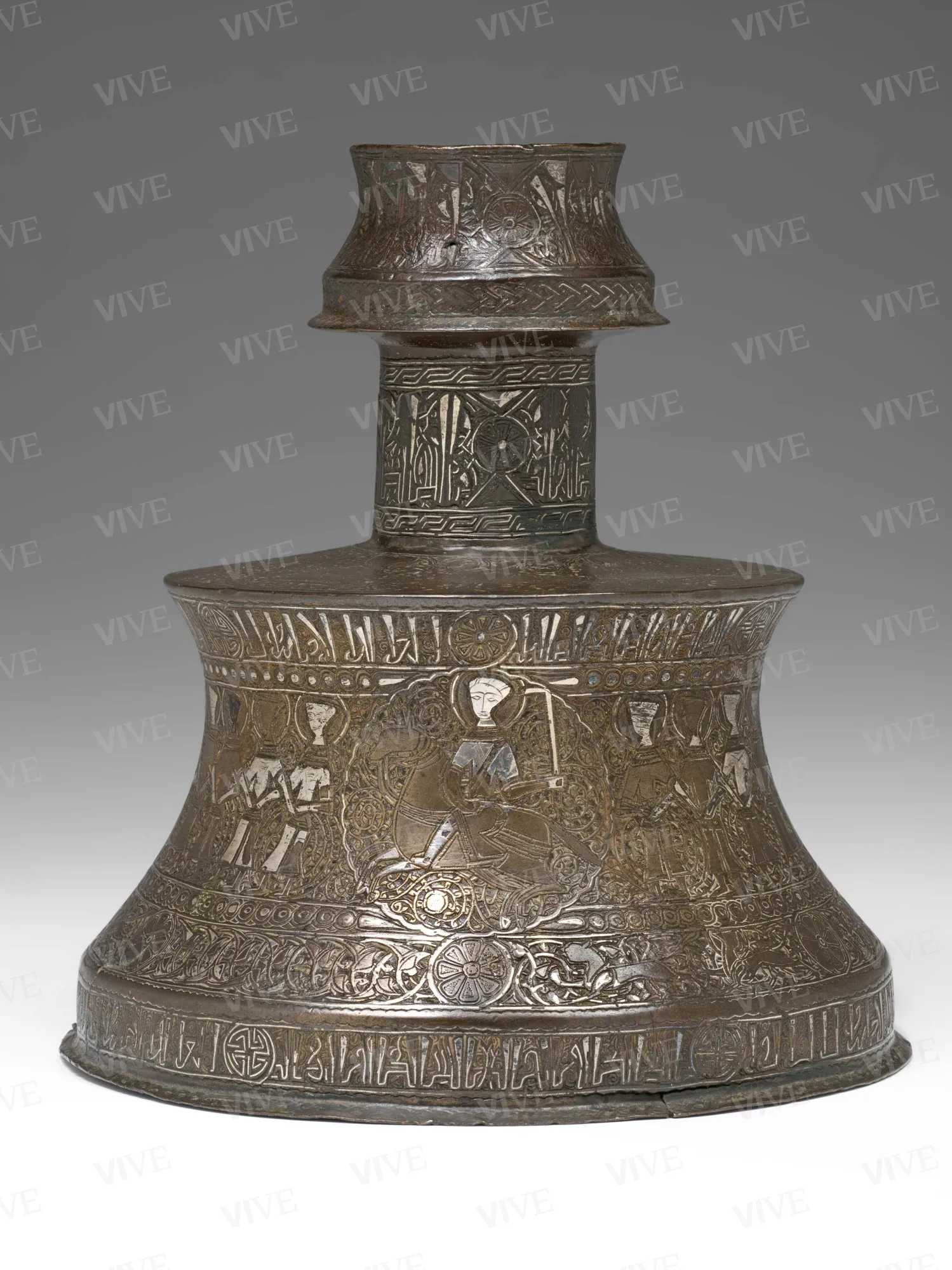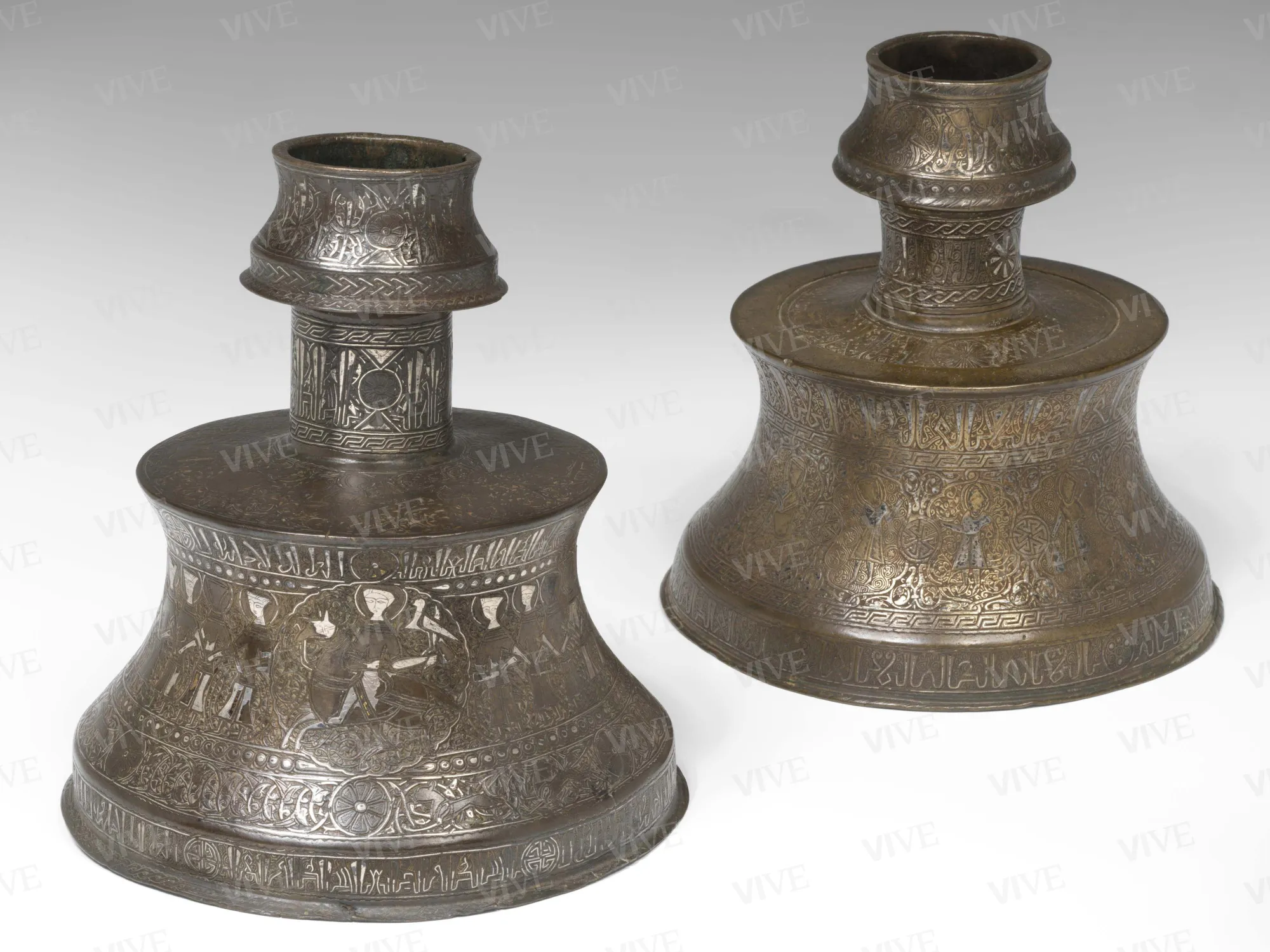Anatolian candlestick
Anonymous 13th–14th century
Candlestick with fluted truncated cone base and truncated nozzle on cylindrical sconce, with engraved encrusted decoration. It has four epigraphic bands: on the nozzle; on the sconce; on the shoulder; and on the circular well. The base contains figures holding each other under the arm, alternating with medallions containing scenes of royal life. The shoulder contains two enthroned sovereigns and one on horseback. An epigraph with figured script appears on the sconce. The object is filled with lanceolate palmettes and decorated with circular medallions containing swastikas and rosettes.
Candlestick with fluted truncated cone base and truncated nozzle on cylindrical sconce, with engraved encrusted decoration. It has four epigraphic bands: on the nozzle; on the sconce; on the shoulder; and on the circular well. The base contains figures holding each other under the arm, alternating with medallions containing scenes of royal life. The shoulder contains two enthroned sovereigns and one on horseback. An epigraph with figured script appears on the sconce. The object is filled with lanceolate palmettes and decorated with circular medallions containing swastikas and rosettes.
Details of work
Catalog entry
This candlestick, like another similar candlestick, arrived at the sanctuary of Santa Maria in Mentorella (or Vulturella) at an unspecified, undocumented date. Attilio Rossi, author of a monograph on the sanctuary (1905), was the first to record it. Unlike the other specimen held at the Museo Nazionale di Palazzo Venezia, the iconography on this specimen has been less studied: the figures holding each other under the arm may be loosely connected with Christian themes, although the figures in the falcon hunting scenes, those combatting the dragon, and the polo player certainly draw from an established repertoire. Giovanna Ventrone (1971) reported similar iconography in a Seljuk jug; Melikian Chirvani (1982, 363, no. 170) showed a similar specimen held at the Victoria and Albert Museum (M.28-1946) with very similar iconography and inscriptions, which he attributed to the Seljuk sultanate of Rûm or to Armenia between the thirteenth and fourteenth centuries. The very detailed and elongated style of the hastae differs from the types then in vogue and is considered particularly original.
Michele Bernardini
Entry published on 12 February 2025
State of conservation
Good.
Restorations and analyses
The restoration report in the archives of Palazzo Venezia was signed by Silvano Germoni and specifies that there were three distinct phases to the restoration. The cleaning of the silver parts was carried out using distilled water and bicarbonate at 3%; the bronze was cleaned with a nitro solvent to dissolve the patina of grease and dirt that had formed over time on the surface of the pieces. The restoration proper—which involved only the bronze elements—was carried out using the B70 system (alcohol and ammonia at 2%). Finally, the candlestick was given a protective coating of Paraloid.
Inscriptions
The surface of the candlestick is covered with animated kufic inscriptions (the hastae are surmounted by human heads) and interspersed with roundels:
لعز الداٸم الا|الاقبال العالا
"Eternal glory AL / prosperity, excellence";
on the sconce:
العز الداٸم الا|الاقبال العا
"Eternal glory ALA/prosperity AL'A";
at the top of the base, by two different calligraphers:
العز الداٸم الاقبال و الا| الشامل الداٸم العز الداٸم الاقبال الا |
"Eternal glory, ALA prosperity/ absolute eternal wisdom/ eternal glory, ALA prosperity/".
Provenance
Sanctuary of Mentorella (or Vulturella);
in temporary storage at the Museum.
Exhibition history
Venice, Palazzo Ducale, Eredità dell’Islam. Arte Islamica in Italia, October 10, 1993–April 30, 1994.
Sources and documents
Loose sheet of paper signed by Maria Luisa Casanova reporting two candlesticks of Islamic art from the thirteenth century.
.
References
Rossi Attilio, Santa Maria in Vulturella (Tivoli). Ricerche di Storia e d'Arte, Roma 1905, pp. 78-86, tav. XIII;
Ventrone Giovanna, Una brocca selgiuchide con scena di danza, in Arte orientale in Italia, Roma 1971;
Scerrato, in Scerrato Umberto, Gabrieli Francesco (a cura di), Gli Arabi in Italia, Milano 1993, p. 458, nr. 506;
Melikian Chirvani, Asadullah Souren, Islamic Metalwork from the Iranian World, 8th-18th Century, London 1982, pp. 363-365, nr. 170;
Ward Rachel M., Candeliere in ottone o in bronzo, in Curatolo Giovanni (a cura di), Eredità dell'Islam. Arte Islamica in Italia, catalogo della mostra (Venezia, Palazzo Ducale, 30 ottobre 1993-30 aprile 1994), Cinisello Balsamo 1993, pp. 243, nr. 130B.

